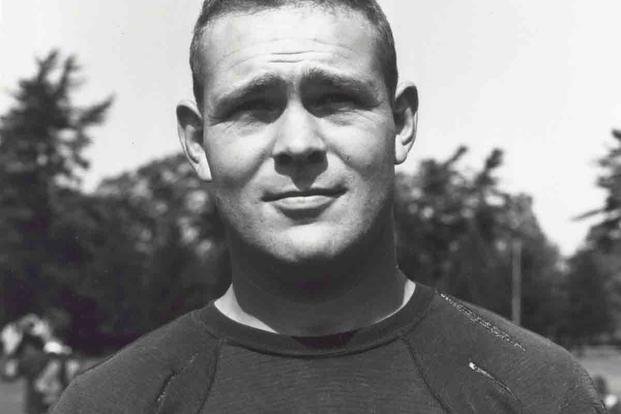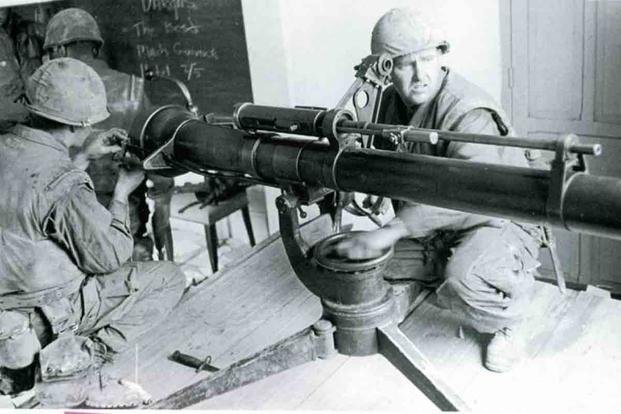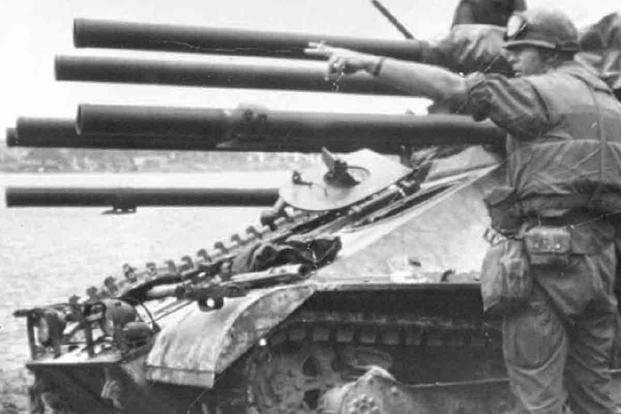Ernie Cheatham's military career far outpaced his NFL career. He did make it into Canton, Ohio's Pro Football Hall of Fame, but he's there as the highest-ranking military member to have played professional football. Cheatham's biggest claim to fame was changing how U.S. Marines fought the North Vietnamese in the middle of one of the Tet Offensive's most pivotal battles.
By the time Lt. Col. Cheatham was sent to back up the Marines fighting in Imperial Vietnam's ancient capital, he was 38 years old and hadn't played football in 14 years. He graduated from Loyola Marymount University, where he played college ball and was picked up by the Pittsburgh Steelers in the 1951 NFL Draft.
Before playing a single game in the NFL, Cheatham answered his country's call to duty by joining the Marines during the Korean War. When he returned for the 1954 season, he played four games in Pittsburgh before being traded to the Baltimore Colts. After two games in Baltimore, the season ended and Cheatham went back to the Corps.

It turned out that being a professional athlete was a pretty good background for a Marine Corps officer like Cheatham. He was not only a physically imposing figure, given his stature as a former defensive tackle, he had the physical abilities and confidence of a pro athlete. He also knew how to study strategy and tactics and what his role should be in the team's gameplay, an ability that would soon come in handy.
By July 1967, Cheatham was a lieutenant colonel and was on his way to Vietnam where he would be commander of the 2nd Battalion, 5th Marines. His was one of three Marine battalions protecting Phu Bai Combat Base and the western approaches to Hue.
On the night of Jan. 30, 1968, Phu Bai was hit with mortars and rockets before it was attacked by units of the People's Army of North Vietnam (PAVN). The attack on Phu Bai was part of the larger Tet Offensive, a coordinated attack on more than 100 towns, cities and U.S. and South Vietnamese military positions by the North Vietnamese and Viet Cong forces throughout South Vietnam.

While most of what the communist forces gained in the Tet Offensive was retaken by the Americans and South Vietnamese relatively quickly in the days that followed, Hue City was an exception.
The city quickly fell to the PAVN and Viet Cong during the offensive and retaking it proved difficult in the immediate aftermath. Fighting between the U.S. troops and communist insurgents was taking place street by street and house by house, and the insurgents weren't being dislodged easily.
Outside of Hue, Cheatham's Marines nearly pinned the PAVN attackers on the Truoi River, but they managed to slip away before Cheatham could annihilate them. Cheatham was a few miles south of Hue when his Marines were called to reinforce besieged Americans in the city. He set up a convoy that would leave the following morning and set about devising a strategy to change the course of the battle.

According to Mark Bowden, journalist and author of "Hue 1968: A Turning Point of the American War in Vietnam," Marines inside Hue had been fighting the way they fought in the jungles of Vietnam. They were totally unprepared for urban combat. They were using small arms and fighting across open areas, making it difficult to repel the invaders of the city.
Cheatham, unsure of the enemy's size, supply or disposition, began strategizing using the one thing he did know: They were fighting in a city. He opened a trunk the battalion carried with it and dove into the field manuals inside. There, he found the Marine Corps' manual on urban combat and attacking fortified positions. He realized he was going to need more firepower.
He and his Marines spent the night gathering heavy weapons like bazookas, anti-tank rifles, flamethrowers, recoilless rifles and tear gas before rolling out to the city. There, he found the Marines had only retaken one city block at the cost of 100 casualties. Cheatham started putting the field manual to use.

By avoiding the streets and advancing on buildings by blowing holes in the walls, Cheatham's Marines broke the stalemate inside Hue. For other buildings, they'd blow holes in the walls and force the enemy out with tear gas. They did it all with fewer casualties. After four days, the Marines had retaken the southern half of the city.
It took more than a month for the Americans and South Vietnamese to push the communists out of Hue. Cheatham was awarded the Navy Cross for his leadership on the ground in the recapture of the city, where he often personally directed heavy weapons using tracers from his M-16 rifle.
Ernie Cheatham would serve in the Marine Corps until 1988, retiring with the rank of lieutenant general. He died in June 2014 at age 84 and is buried in Quantico National Cemetery.
-- Blake Stilwell can be reached at blake.stilwell@military.com. He can also be found on Twitter @blakestilwell or on Facebook.
Want to Learn More About Military Life?
Whether you're thinking of joining the military, looking for post-military careers or keeping up with military life and benefits, Military.com has you covered. Subscribe to Military.com to have military news, updates and resources delivered directly to your inbox.















